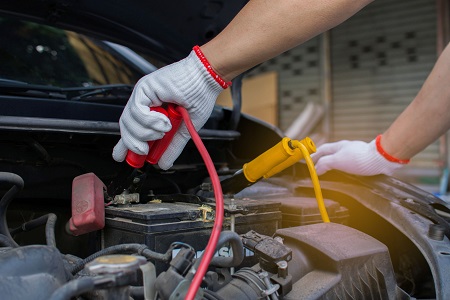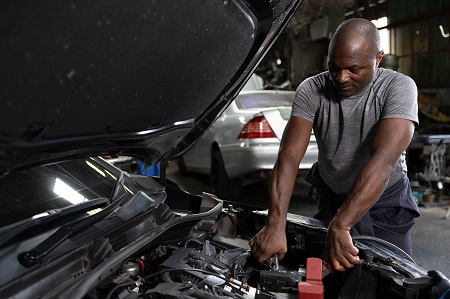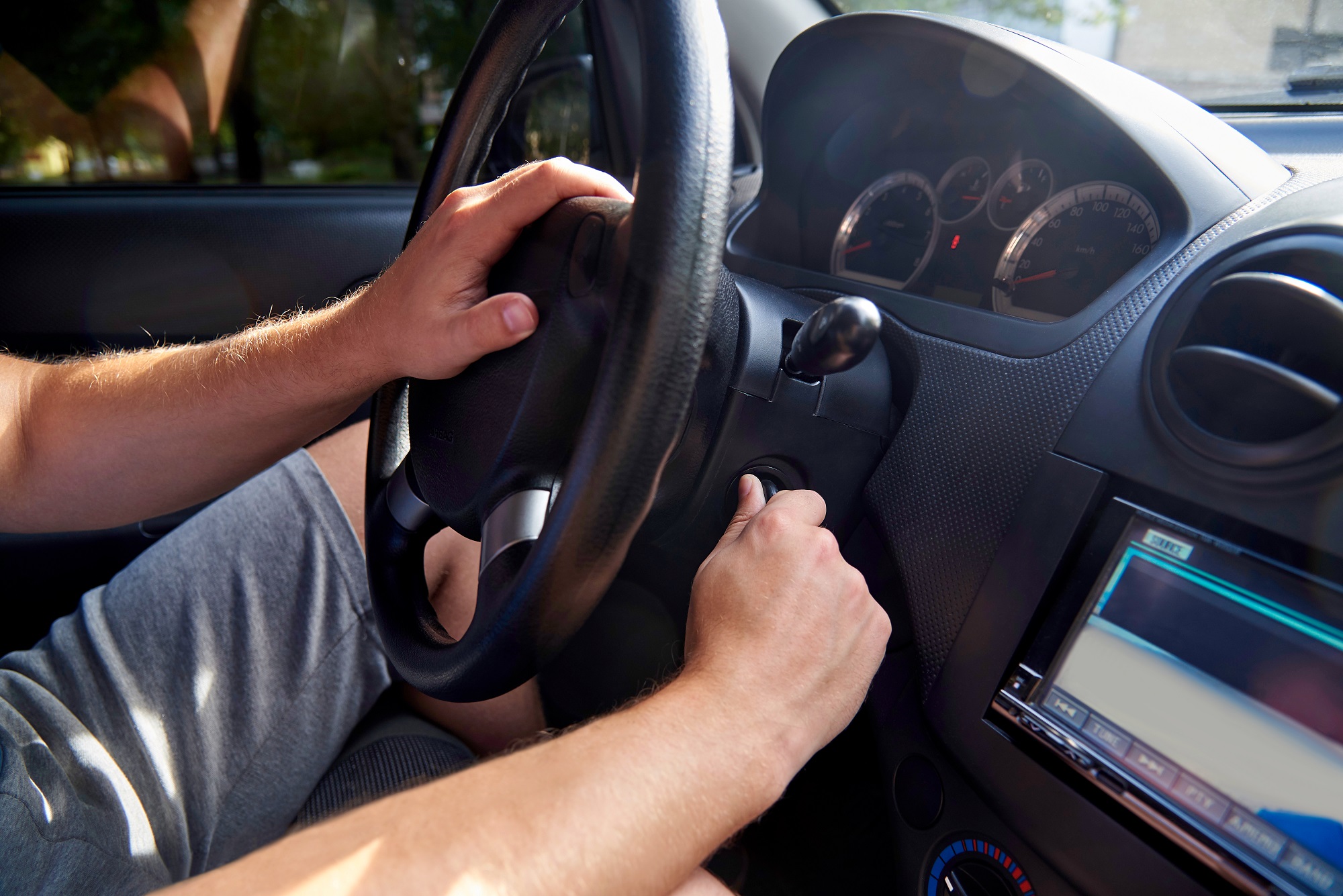You’re all set for a drive. You turn the key or press the button, and…nothing happens. Your car won’t start! It’s an incredibly frustrating situation that can disrupt your plans and leave you stranded.
But don’t worry; there could be several reasons why your vehicle isn’t starting – from a dead battery to a bad timing belt. The good news is most of these issues are fixable with some technical know-how or a mechanic’s help.
This article delves into eight possible culprits behind your car’s refusal to start, detailing how each component works and what might have gone wrong. We’ll also offer practical solutions and what kind of auto repair you might need to get your vehicle back on the road quickly.
Understanding these common problems will not only help in troubleshooting but can also prevent future mishaps by maintaining your car properly.
Bad or Dead Battery and the Solution

Isn’t it just the worst when you’re all set to go, but your car won’t start? Chances are, you’re dealing with a bad or dead battery. This is often due to age and lack of maintenance.
Over time, corrosion can build up on the terminals, hindering electrical flow. The solution? Start by checking for visible signs of corrosion. If it’s present, disconnect the battery and clean off the terminals using a mixture of baking soda and water.
Next, try jump-starting your car – if this works, then your issue is likely solely battery-related. If it still doesn’t start after cleaning and jump-starting, consider replacing your battery altogether.
Regular maintenance can help prevent these issues in the future, so don’t neglect that aspect either.
Broken Distributor Cap and the Solution
If there’s a crack in your distributor cap, it could be messing up the timing and flow of electricity to your engine, leading to ignition issues. Your car may not start because the spark that ignites the fuel in your engine isn’t happening at the right time—or even at all.
The solution? Inspect the distributor cap for any visible damage. If you see cracks or signs of wear and tear, replace it immediately. To do this, disconnect the cables from the old cap one by one and connect them to the new cap in exactly the same order. If you’re unsure about doing this yourself, call a professional mechanic.
Remember, maintaining your distributor cap can prevent serious engine problems down the line.
Bad Alternator and the Solution
Dealing with a faulty alternator can be quite a headache. Your car’s alternator is a vital component that recharges the battery while your vehicle is running. When it goes bad, your car might not start.
Here are some signs and solutions for dealing with a bad alternator:
1. Dim lights: Alternators provide power to the car’s electrical system. If your lights are dimmer than usual, this could be an indicator.
2. Warning light: Most cars have an ‘ALT’ or ‘GEN’ warning light indicating issues with the alternator.
3. Dead battery: This could also signify a problem if the battery is good but still won’t charge properly.
The solution? Have a mechanic replace or repair the alternator as soon as possible to prevent further damage to other components.
Your Car Is Not In Park or Neutral and the Solution
Have you ever found yourself in a situation where your vehicle refuses to ignite because it’s not in park or neutral? This could be frustrating, but it’s actually a safety feature designed to prevent the car from lurching forward or backward upon starting.
Your car’s neutral safety switch ensures this by only allowing ignition when the transmission is in park or neutral.
If your car doesn’t start even when you’re sure it’s in park or neutral, there may be an issue with this switch. It might be faulty, misaligned, or damaged.
The solution is either realigning the switch if it has shifted out of position, replacing it if it’s worn out, or repairing any damages. It’s best to have a mechanic examine and fix this problem for safety reasons.
Issues with Ignition Switch and the Solution
A faulty ignition switch can be a real headache, often leaving you stranded and frustrated. When it fails, your car won’t start because the electrical signal to the starter motor is interrupted. This issue can mimic other problems like a dead battery or a bad starter.
To diagnose this problem, turn your key in the ignition. If you notice that once the key reaches the run position, everything lights up on the dash, but as soon as you turn to start, nothing happens, then there’s a good chance it’s an ignition switch issue.
The solution? Replace that pesky switch! It’s a detailed job best left to professionals due to its complexity. So, don’t hesitate – take your vehicle to a trusted mechanic for proper and quick resolution.
Bad Spark Plug and the Solution
Having addressed issues with the ignition switch, we now shift gears to another common problem – bad spark plugs. Your car’s spark plugs play a pivotal role in starting your engine. They ignite the air-fuel mixture within the combustion chambers.
Over time, these little components can get worn out or damaged, causing your vehicle not to start. Signs of a bad spark plug include difficulty starting, poor fuel economy, and reduced acceleration. If you suspect this might be the issue, it’s best to replace them immediately.
Taking it to an auto repair professional is advisable. Remember that preventive maintenance can prevent such problems from occurring in the first place.
Bad Timing Belt and the Solution
It’s your timing belt that’s perhaps in dire straits, causing a disruption in your vehicle’s functionality. This vital component synchronizes the rotation of the crankshaft and camshaft, ensuring proper engine timing. If it breaks or wears down, your car won’t start.
You should consider taking your vehicle to an auto repair shop for replacement. A team of expert mechanics will ensure the job is done properly and safely.
Clogged or Empty Fuel Tank and the Solution
Should your vehicle suddenly refuse to roar to life, you might be dealing with a clogged or empty fuel tank – an issue that can cause quite an inconvenience. If your car’s not getting enough fuel, it won’t start. It could be as simple as running out of gas; make sure to check your gauge first.
If you’ve got enough gas but still can’t get things going, then a clog in your fuel system could be the culprit. You’ll need to unclog it promptly for free-flowing fuel. This usually involves replacing the fuel filter or potentially cleaning out the entire system. In severe cases, professional help may be necessary.
Regular maintenance and checks on your car’s fuel system are crucial for its smooth operation.
Contact Art Morse Auto Repair for Any Starting Troubles You May Have

Art Morse Auto Repair is your go-to destination for automotive repair services in Ridgefield, Clark County, and the wider Vancouver area. We understand the importance of your time, so we make it our mission to get your car back on the road as quickly as possible. Our team of skilled mechanics is dedicated to delivering exceptional service, whether it’s a routine oil change, brake system repair, or a more complex issue. What sets us apart is our commitment to our local community, providing friendly and affordable auto services that prioritize customer satisfaction. With our prompt and reliable workmanship and competitive prices, our repair specialists offer unparalleled value that you won’t find elsewhere!
Contact us today for any top-quality auto repair services you need!
Auto services we offer:
- Maintenance Services such as Oil Changes
- Engine Repair
- Transmission Repairs
- Brake Repairs
- And More
Visit our About Us page for more information about our quality auto repair shop.

